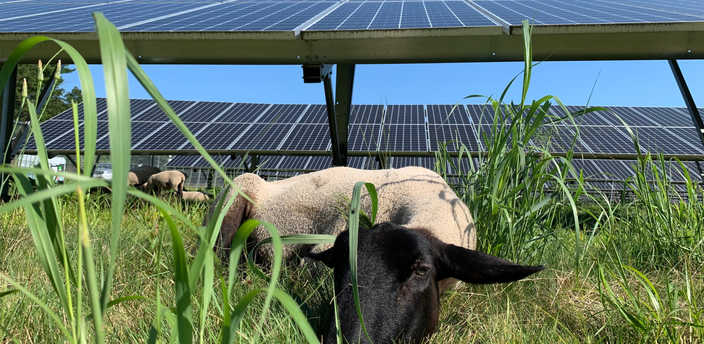Combining sustainable energy with sustainable agriculture
We are a leading dual-use developer, with over 100 megawatts across more than 30 agrivoltaic projects in development.

We are a leading dual-use developer, with over 100 megawatts across more than 30 agrivoltaic projects in development.
Our projects utilize a combination of sustainable land management practices.

Solar sites that maintain or seed wildflowers, pollinator-friendly plants and native species within the array to create pollinator habitats that bees can thrive in.
Solar sites that incorporate livestock grazing and forage as part of the overall landscape maintenance.

Solar sites designed to accommodate crop cultivation and other labor-intensive farm plans underneath and around panels.

Solar sites designed in consultation with conservation organizations that focus on restoring ecosystem vitality and function through sustainable site design and permanent conservation efforts.

Industry: Partners like the American Farmland Trust, Solar Agricultural Services, University of Massachusetts Amherst and University of Maine at Orono are crucial in helping to prove that our construction and management practices have neutral or positive impacts on crops growing under the panels.
Property Owners: We design the project around the unique needs of each landowner, keeping farmland in agriculture where possible, while providing landowners with additional income. Learn more about this through our Grafton and Westport projects.
Project Owners: Our project owners guarantee the investment we make to incorporate dual-use practices are continued over the entire 15-20 year lifespan of each project.
In addition to making investments in the future of dual-use, we have a track record of industry improvements including:

Development of shade analysis tools and new design techniques that drive innovation.

Investments in farm enterprise including custom farming equipment, capital improvements, and business models.
Development of polluted lands such as superfund sites, brownfields, and landfills.

